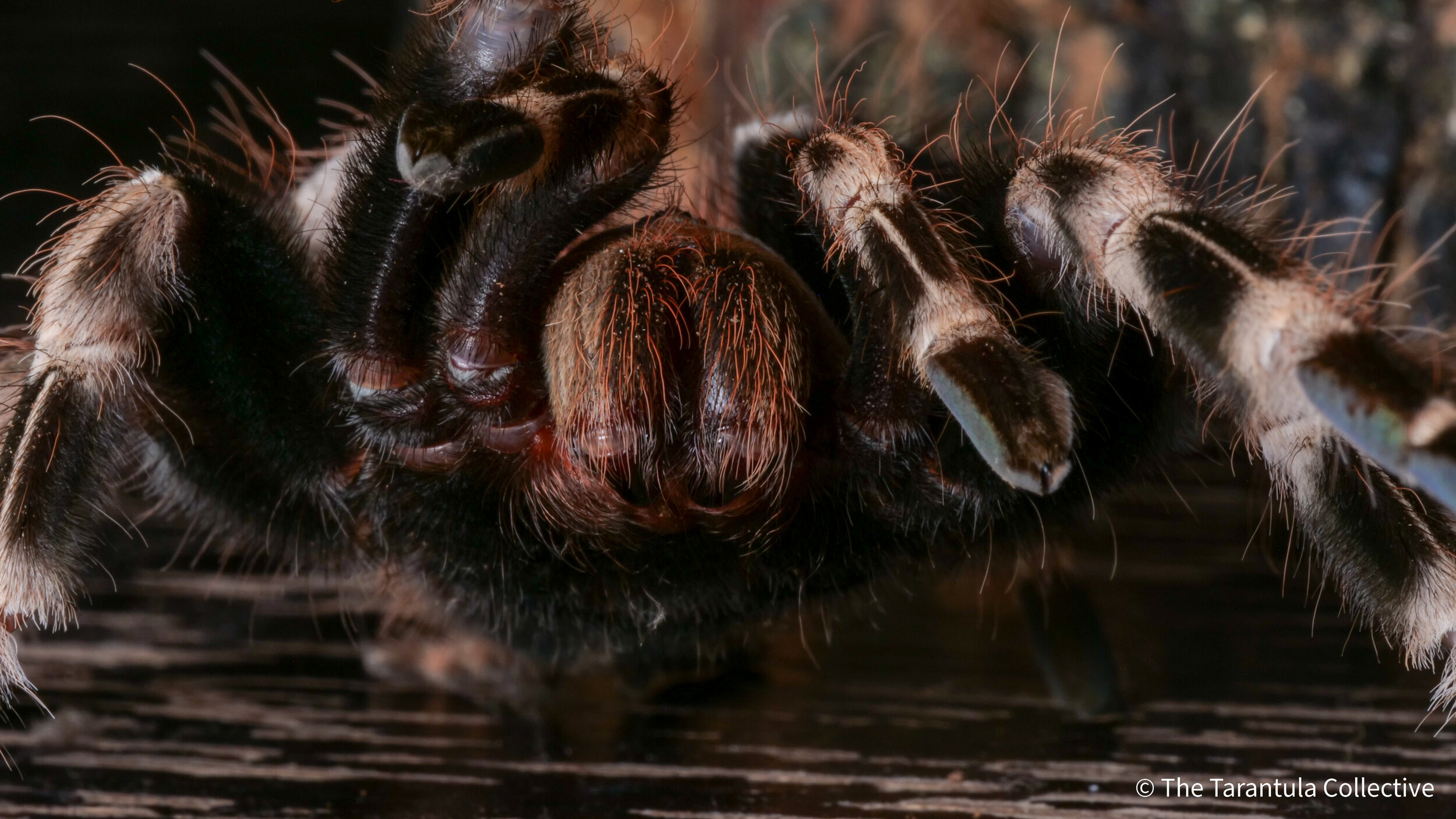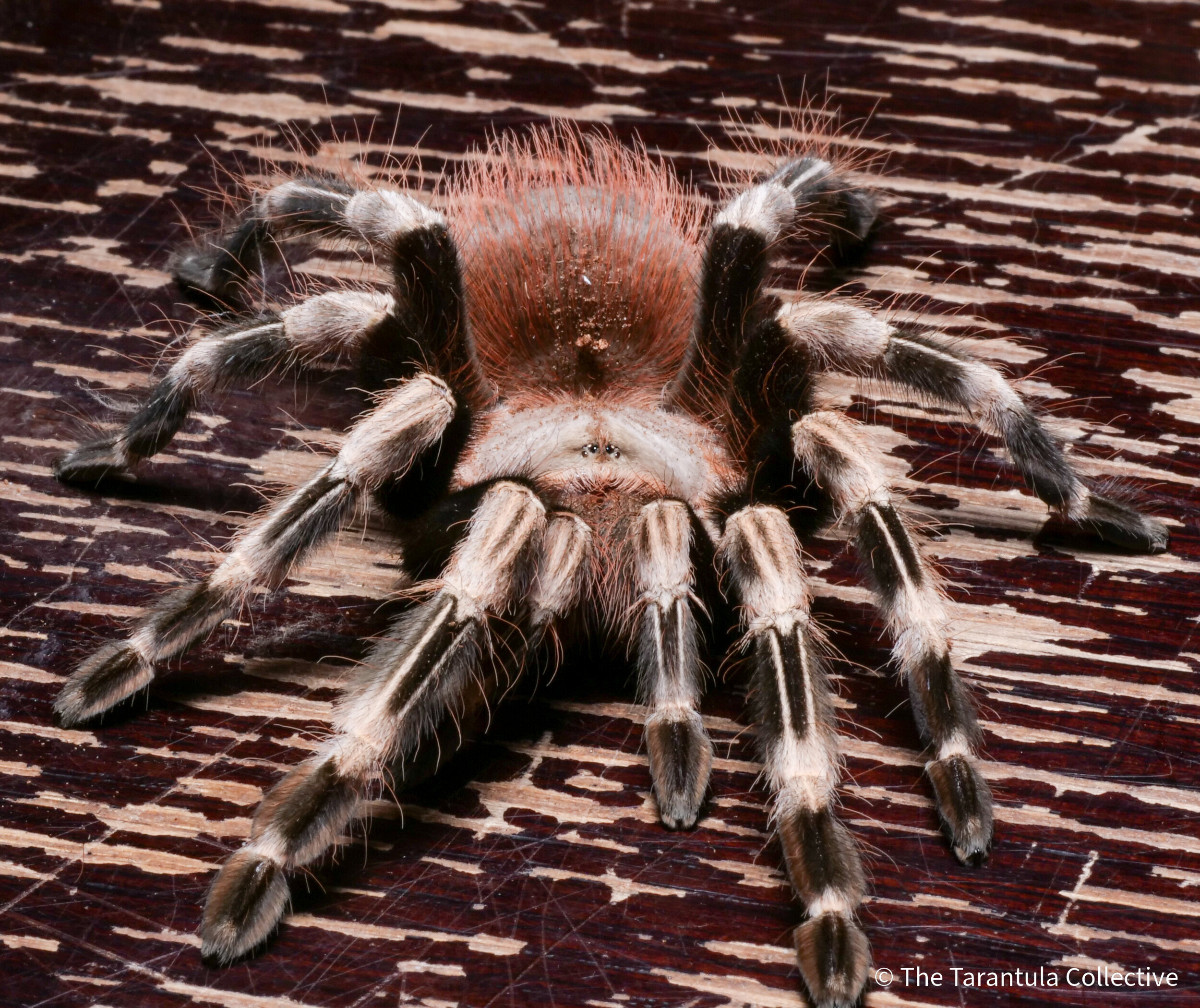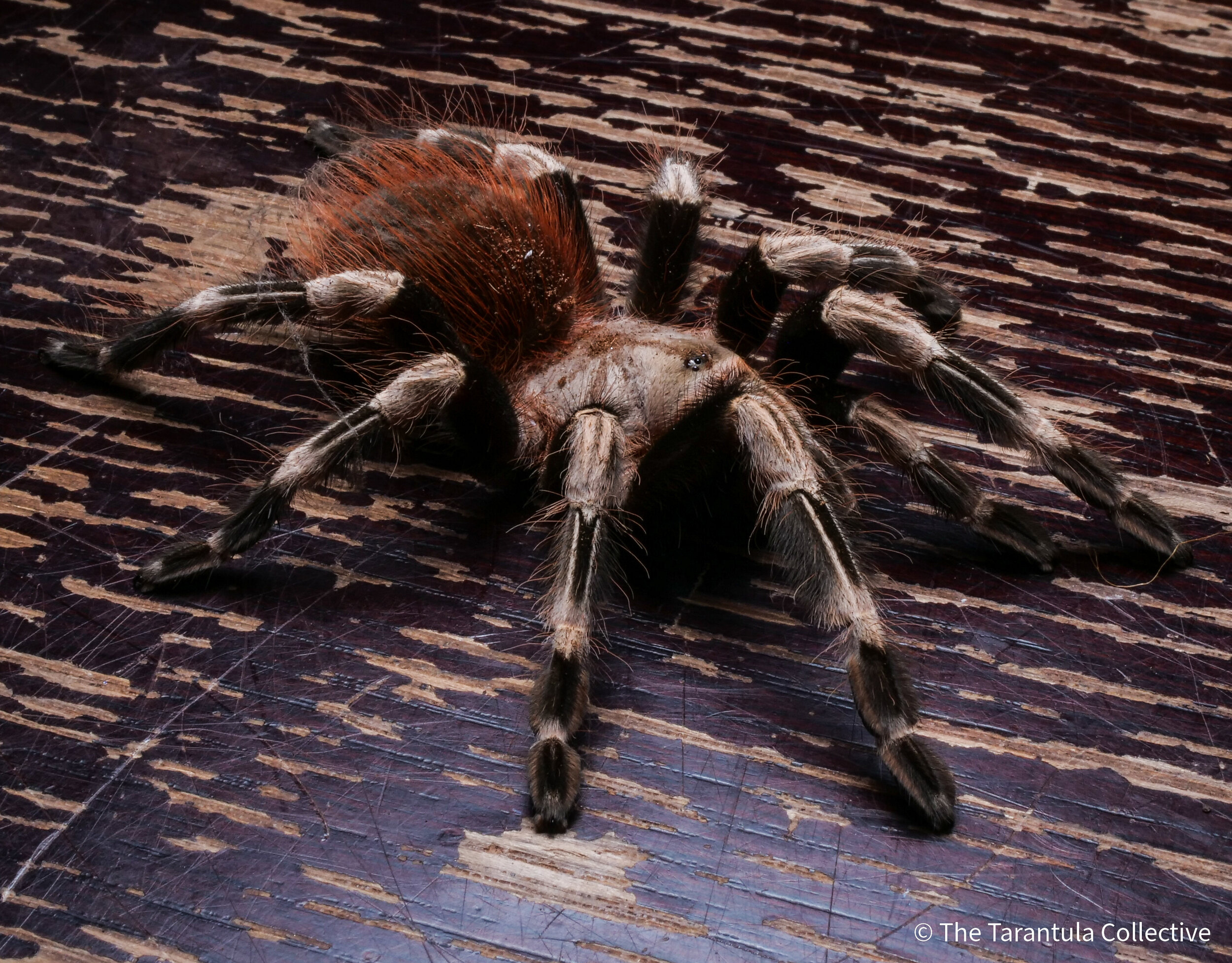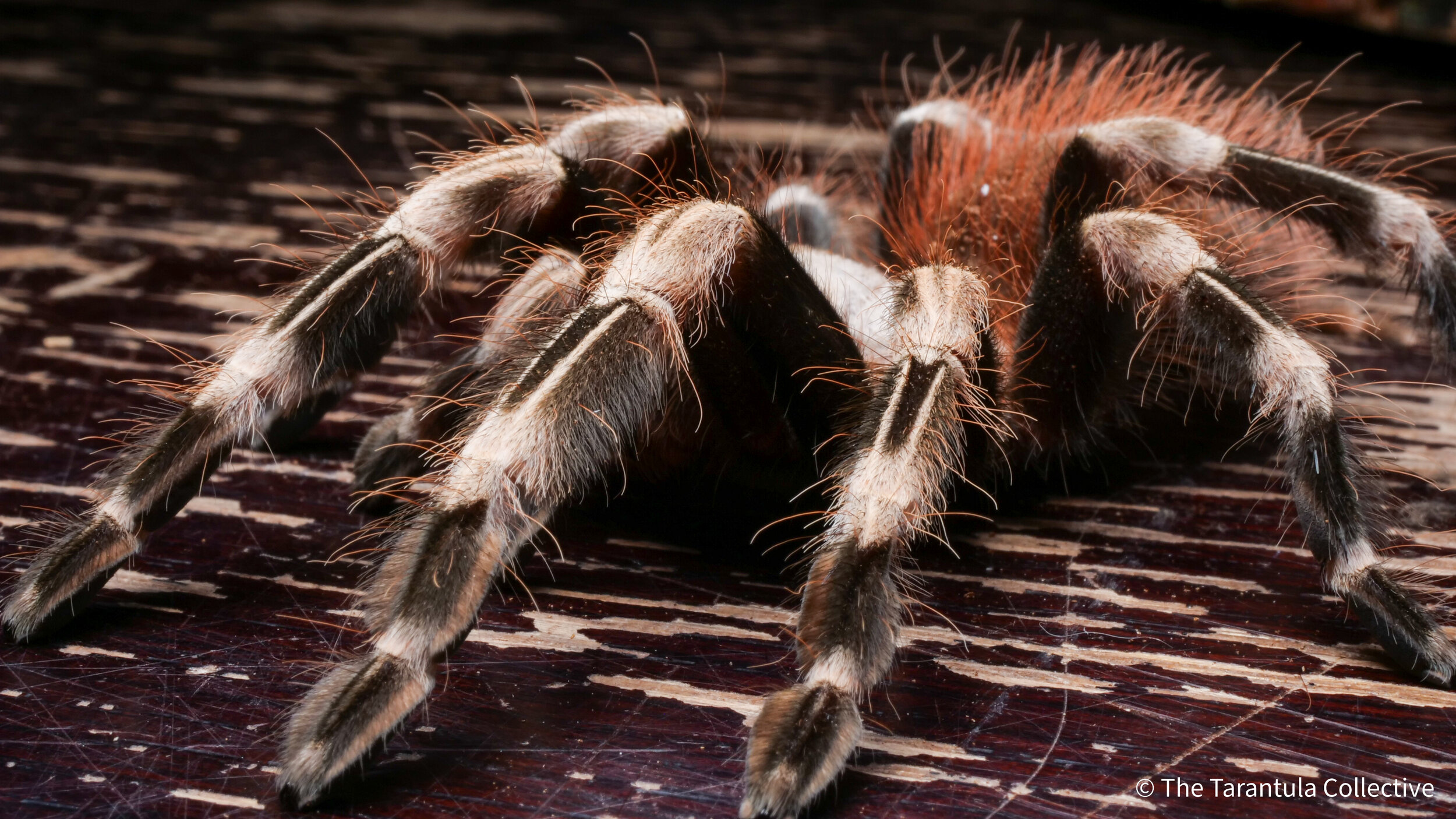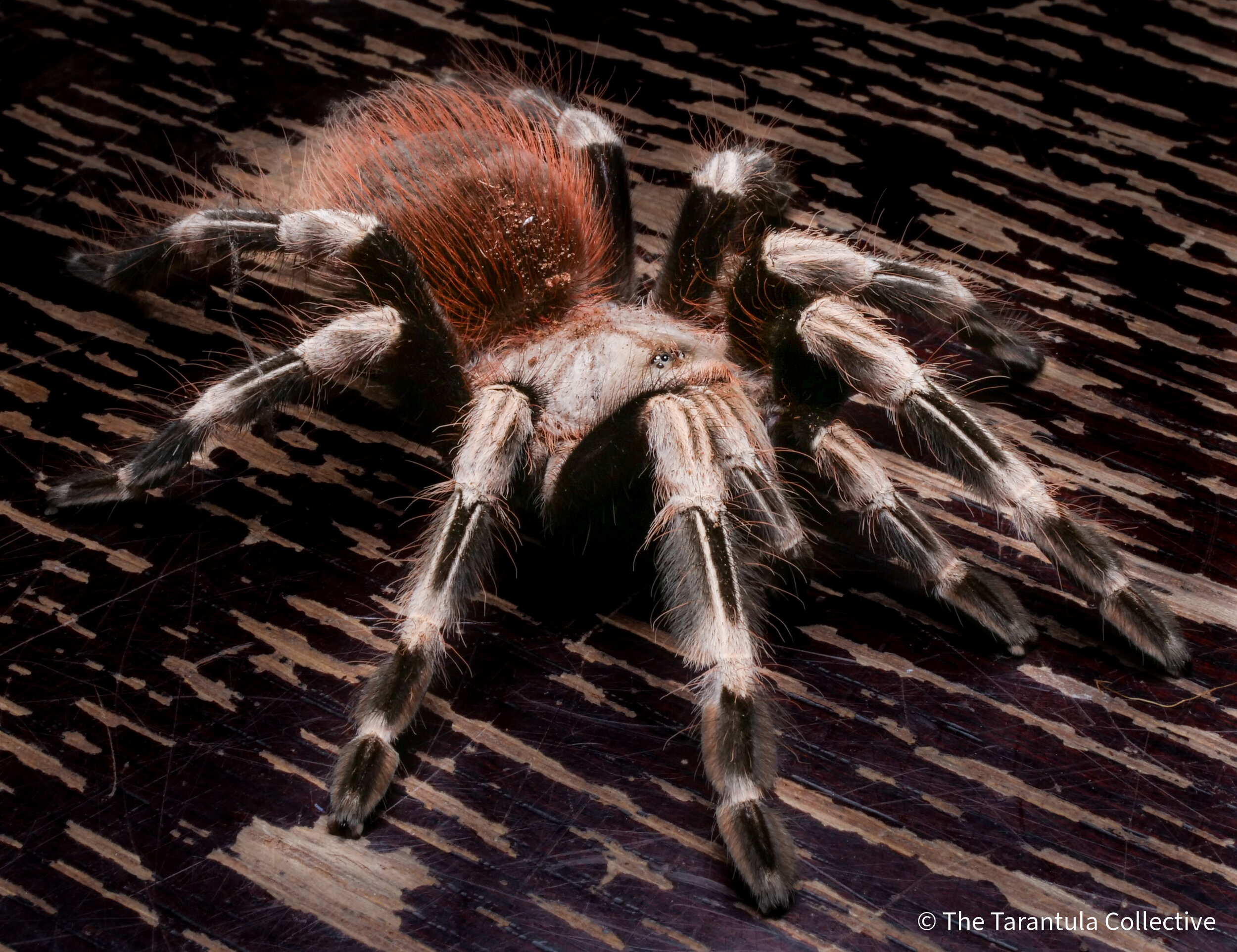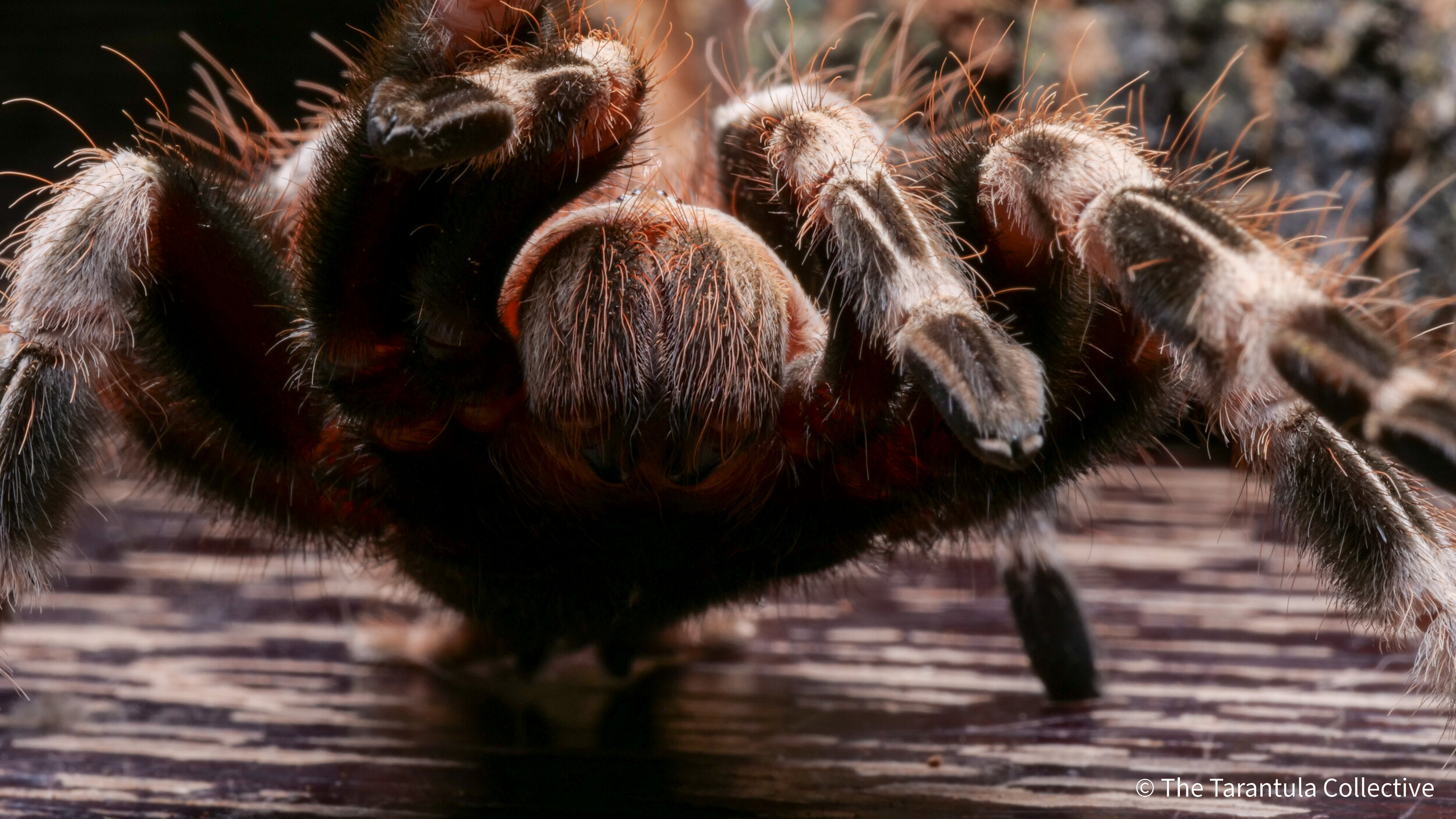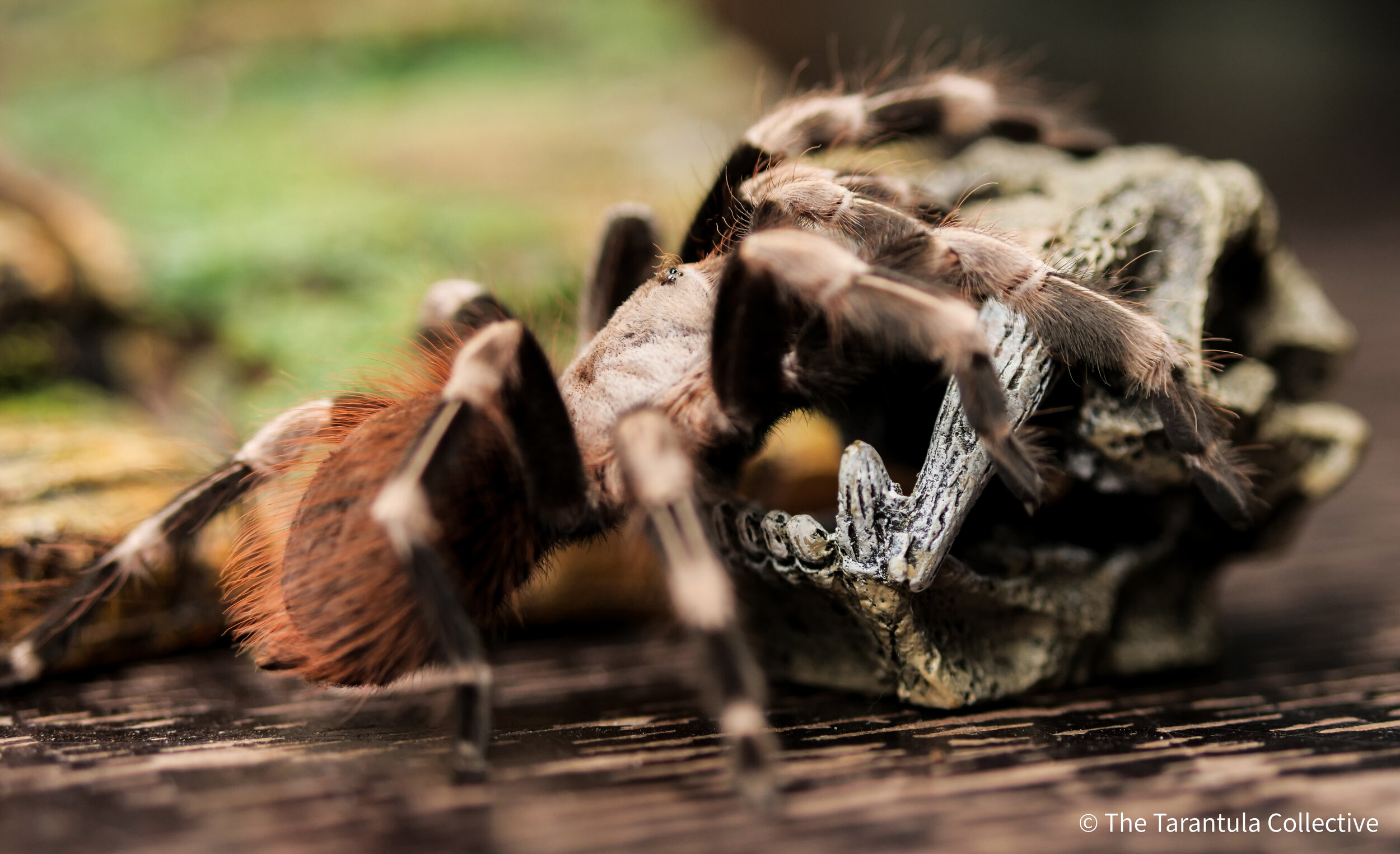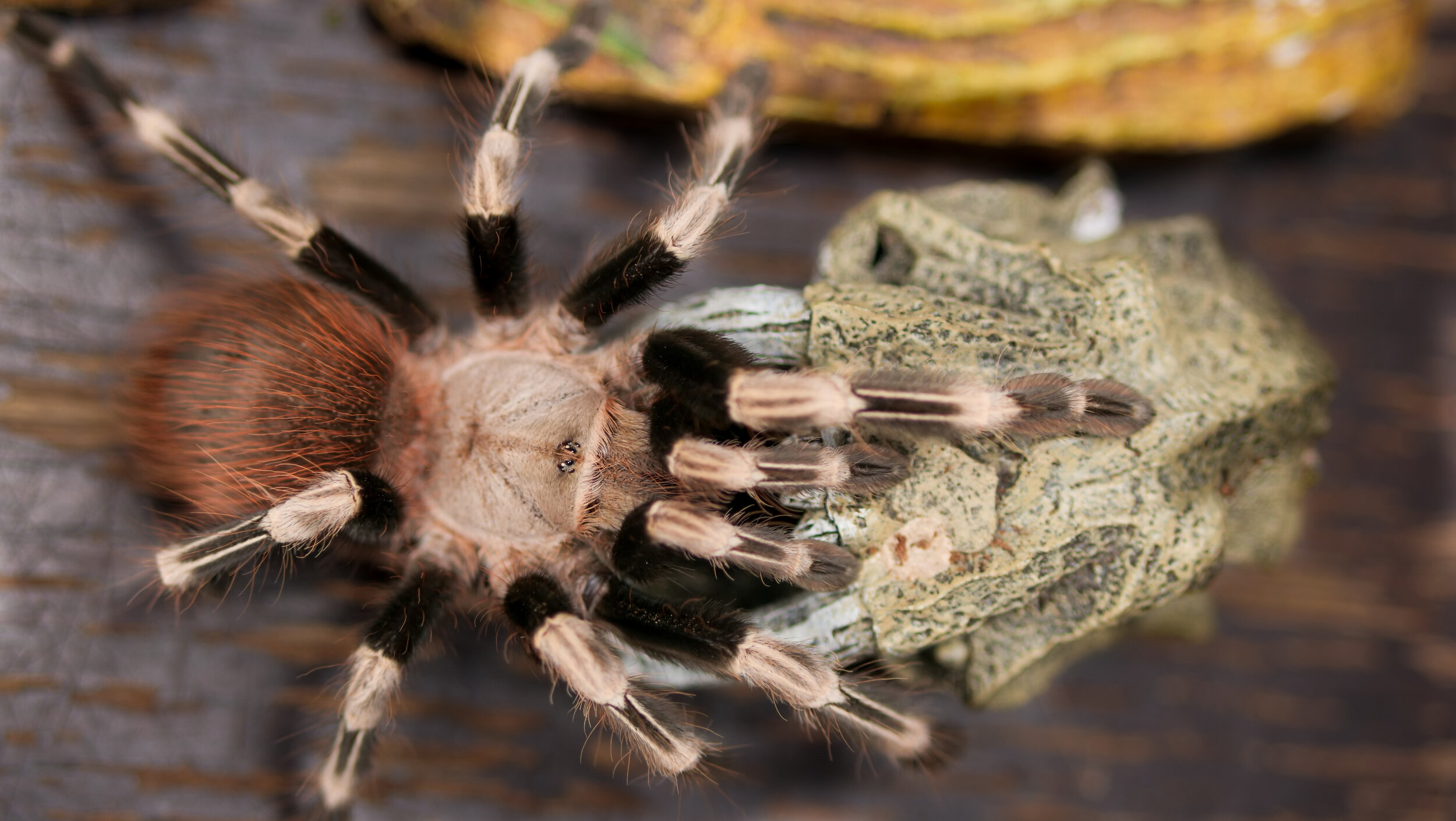Brazilian Red & White Tarantula (Nhandu chromatus_ Care Sheet & Husbandry
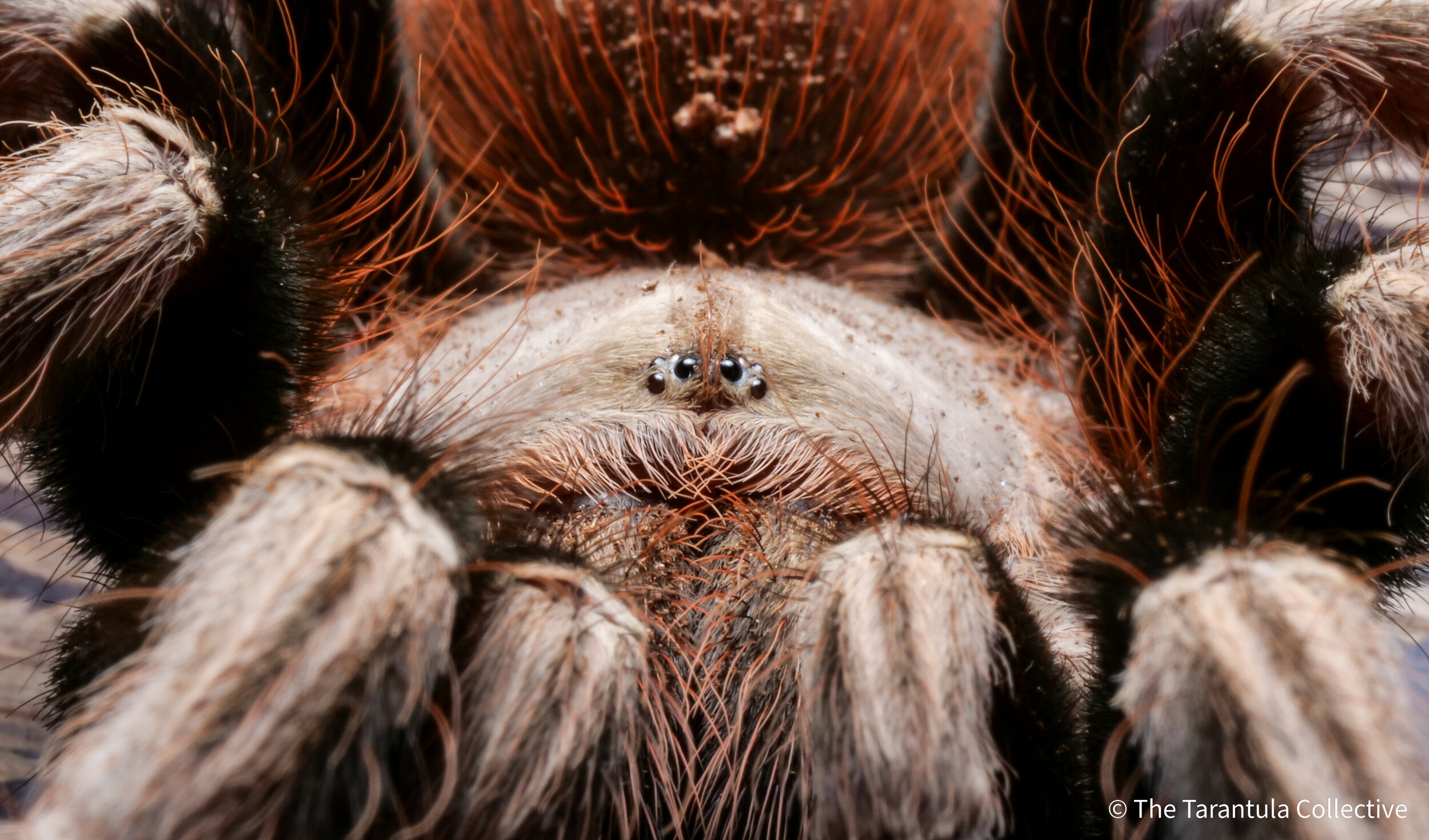
Care & Husbandry Video
Is the N. chromatus the right tarantula for you? In this video we are covering the Nhandu chromatus or Brazilian Red and White Tarantula. I cover how I keep mine including enclosures, husbandry, feeding, water, basic care, temperatures and humidity. I also include some basic facts about this spider, including location, size, venom, urticating hairs, temperment, and behaviour. This is a great new world tarantula for beginers, intermediate, and expert keepers a like! This guide is also applicable to their cousins Nhandu tripepii (Brazilian Giant Blonde Tarantula), Nhandu carapoensis (Brazilian Red Tarantula), and Nhandu coloratovillosus (Brazilian black and white tarantula).
Scientific Name: Nhandu chromatus
Common Name: Brazilian Red and White Tarantula, White Striped Bird Eater
Type: Terrestial
Location: Brazil and Paraguay
Diagonal Leg Span (DLS): up to 6-7in (16.5cm)
Growth Rate: Medium
Life Expectancy: Females up to 15 years | Males up to 4 years
Recommended Experience Level: Beginner / Intermediate
The Brazilian Red and White tarantula, known scientifically as the Nhandu chromatus, is a terrestrial, new world tarantula that comes from the subtropical forests and grasslands of Brazil and Paraguay. This species was described by Schmidt in 2004 and has become a very popular species in the hobby since then as they do very well being kept in captivity and produce egg sacs with hundreds of spiderlings...even a few cases with over a thousand spiderlings. Similar in appearance to the Acanthoscurria geniculata, you can easily spot the difference by looking at the color of the carapace as the N. chromatus has a paler, bone color appearance.. This species in an opportunistic burrower but does spend a lot of time out in the open, especially as they get larger and approach their adult size. This tarantula has very effective urticating hairs that can be very irritating if they get on your skin and can cause more serious issues if they were to get in your eyes or mouth. They are a skittish spider, quick to flee and hide into their burrow when disturbed, but they can be defensive if they have no clear path of escape and will not hesitate to kick urticating hairs into the air. Constantly bothering them, they will give you a threat pose and even slap the ground to attempt to scare you off. If you heed these warnings and leave your N. chromatus alone when it is obviously stressed out, you will not have to worry about it attempting to strike and getting bitten. Being a NW species, their urticating hairs are much more of a deterrent than their venom as it is known to now be medically significant, but this is a larger species of tarantula, so even though the venom may not be strong, the size of the fangs could cause some pain, so respect your spider and give them space and leave them alone if they are showing defensive behavior.
The husbandry for this species is fairly simple.
I keep my spiderlings in basic spiderling enclosures with plenty of room to burrow. The younger the spiderling, the more it seems to prefer to burrow and the more time it will spend hidden deep in their burrow. I prefer to keep this species on more damp substrate as slings and use a substrate like creature soil or jungle mix as they seem to hold moisture better and don’t have issues with mold compared to coco fiber. Thoud coco fiber will work fine, I would suggest mixing in some sphagnum moss, a little sand, and peat moss or organic top soil in with the coco fiber to get a substrate that will hold its shape better while also providing the optimal moisture level. I include a hide and water dish and keep the dish full overflowing it once a week.
For juveniles, I move them into a square, acrylic terrestrial enclosure 3-4x the leg span of the spider in length and fill it up 2/3rds with the same type of substrate. I provide plenty of depth so the spider can burrow, but also make sure to include a hide. I don’t worry as much about keeping the substrate damp as I do for the spiderlings, but I still provide a water dish and overflow it about once a week to saturate half the substrate and let it dry out before overflowing again. I also pour water down a few corners of the enclosure to dampen the bottom layer of substrate allowing the tarantula to burrow down for more humidity if it needs.
When they outgrow that enclosure, I move them into a 2.5 - 5 gallon size enclosure as young adults and nothing larger than a 5-10 gallon enclosure when full grown. I fill these enclosures up at least half way, if not more, with substrate to ensure there is plenty of depth should they choose to burrow. At this size, mine hasn't burrowed much, but does spend a lot of time in its hide coming out in the open mainly at night. I provide a size appropriate hide and a large water dish that i overflow and dampen about ⅓ of the substrate. I keep the water dish full and overflow it again once the substrate has dried out.
As far as feeding, I give spiderlings pinhead crickets or roaches once or twice a week and increase the size of the feeders as the spider grows. I case the frequency and amount on the size of the abdomen. Once the tarantula begins looking very plump, I go back to feed less prey, less often until it molts. This tarantula can go weeks or even a few months without eating once it has entered premolt...but I have on occasion had a spiderling eat and then molt the next day. I wait at least 24-48 hours after a molt before attempting to feed again, giving them enough time to harden up.
For juveniles, I feed about once every week or two and give them a couple medium crickets or roaches, no bigger than the size of their body. My Nhandu’s are not picky with prey and I can feed them crickets, roaches, mealworms, hornworms, etc. I have yet to offer them a prey that they have turned down. Again I base the frequency and amount of prey on the size of the abdomen but don't feed any more often than once a week and no more than 4 or 5 medium crickets at a time. I want to make sure they eat their prey and it doesn't hide somewhere, die and rot. Because the enclosure is a little damp, I dont want to leave anything in the enclosure that will rot and attract mites or encourage mold growth. I regularly spot clean the enclosure to remove and bolluses or uneaten prey.
And for adults, I will drop 6-8 large crickets every 2-4 weeks. This is also determined by the size of the abdomen. When they are thin I feed more prey more often and as they plump up I feed less prey less often. It is typical, in my experience, for this T to go into hiding in its burrow for weeks or months at a time when they are full or entering premolt, so i try not to over feed. I make sure that I remove any uneaten prey within 24 hours and spot clean the enclosure after feeding to remove any bulloses or leftovers.
This is a very hardy tarantula that is forgiving of many husbandry mistakes. I know a lot of people that keep this species on dry substrate all the time and have had no issues. I think a lot of that has to do with the environment of the room you are keeping them in as well other factors. I have let my Nhandus enclosure dry out for months at a time and had no issues, so obsessing and worrying about the moisture level and being concerned with hitting a certain percentage of humidity is not something to worry about. This tarantula can also be very skittish and is known to bolt suddenly and run out their enclosure leaving behind a cloud of nasty urticating hairs. This species is popular with beginners because of its size, feeding response, appearance and ease of care, but its nervous demeanor, speed and urticating setae should not be overlooked and underestimated. I think anyone new to keeping tarantulas should have no issues keeping this species as long as they give the Nhandu chromatus the respect it deserves and take precautions to keep it corralled while rehousing by using catch cups. Those very sensitive to urticating hairs should definitely consider wearing gloves, long sleeves, and maybe even safety goggles and face masks when rehousing juveniles and adults if your t is more apt to kick hairs. But not all specimens are alike and some N. chromatus are more laid back than others and rarely kick hairs.
This is a very hardy and forgiving species which makes it great for those new to the hobby, personally I would wait until you have a little experience with easier species and you are sure you have your husbandry down before getting this tarantula, but if you have your heart set on the Nhandu as your first tarantula, I don’t think you will have any issues. As with any tarantula, if you give them the respect they deserve and pay attention when interacting with them, you should be fine. This unique and gorgeous looking tarantula is a staple in the hobby and a must have in any tarantula collection.


